






 |
IZ8HHQ'S 2M MOXON

What's up ?
The MOXON is a stealthy gain antenna invented by Les Moxon, G6XN, that's inexpensive and fun to build.
All
information about how to project your moxon antenna and other
resources (photo, project requirements, etc) are explained on Moxon home page.
In this page I'm pleased to share with users my experience of design
and construction of the antenna, with requirements and photos and step by
step instructions to build it.
My Moxon Antenna has the following requirements:
Central Frequency Band: 145.000 MHz
Construction materials
- anodized aluminum pipe - 4mm Ø diameter - 2000mm length, cost 2eu
- 2 * plastic pipe - 10mm Ø diameter - 1000mm length, cost 2 * 2eu
- plastic cable ties, cost 50pcs for 1eu
- plastic pipe for electrical systems - 100mm Ø diameter - 2000mm length, cost 0,70eu
- 2 * terminal caps, cost 2 * 0,20eu
- economic rapid glue, cost 0,80eu
|
Moxgen
Moxgen is a small program for automatically generate the antenna dimensions. I set it for central band 145.000 MHz.
This small program can be downloaded from Moxon website.

Construction
- Prepare and cut the exact dimension
As seen in the project, the moxon antenna is composed in 2 elements:
Driven and Reflector, while the driven element is composed in 2 parts,
so in total there are 3 active elements.
First, i have to cut the aluminum pipe in 2 parts to realize the
Reflector. His length is the result of 2 * D + A parts. In this project
the dimension is 2 * 142,8mm + 743,3mm = 1028,9mm.
Then i have to cut the remaining part of the aluminum pipe into two
parts, in which we are interested in the size matches the 2 * B + A, ie 2
* 98,7mm + 743,3mm= 940,7mm. This part should be cut into two equal
parts, then 940,7mm / 2 = 470,35mm.
Note: Because the corners of the rectangle are in the reality of
the curves (although very close) and because the aluminum pipe is full
and not empty, i decide arbitrarily appropriate decimals of a
millimeter to the nearest integer and add 1mm for each corner.
Hypothetical Final Size are: 1031,0mm for the first part, and 943,0mm for the second, then it should be cut into two equal parts (943 / 2= 471,5mm).
Second: After have cut the reflector part, i have 2000-1031 =
969mm. Now, I take advantage of the fact to have chose an aluminum tube
exactly 2 meters length, and i decide not to eliminate the 969-943= 26mm
part (which would correspond to 13mm for each half), but i cut this
piece into two parts exactly the same: 969 /2 = 484,5 and to use those
additional 484,5-471,5= 13mm per part as a point to mount the terminal
caps.
Now I have to cut the plastic pipe to create a skeleton on which to set the aluminum parts: two pipes are 280mm length and one is 750mm
- Assembling parts - photo
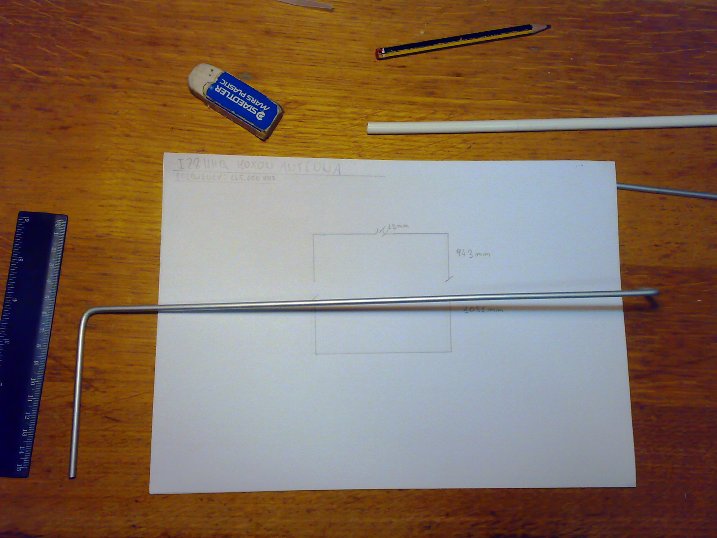
This is half driven element [(2 * B + A)/2] part is 969 / 2 = 484,5
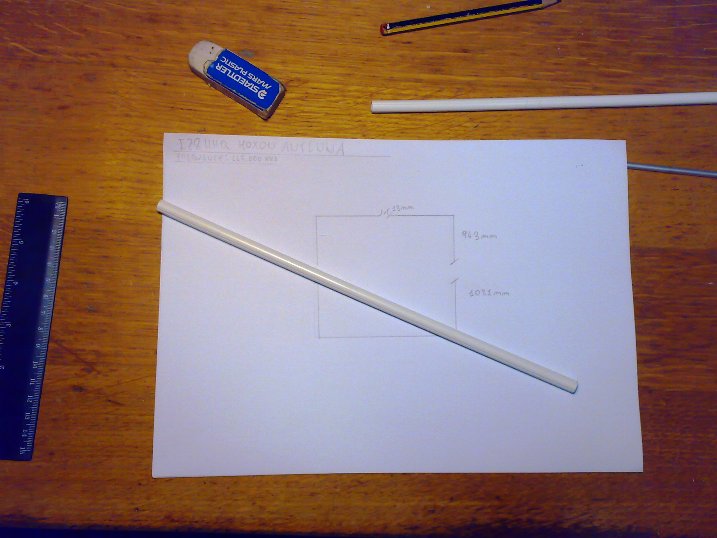
Plastic pipe for skeleton 280mm length
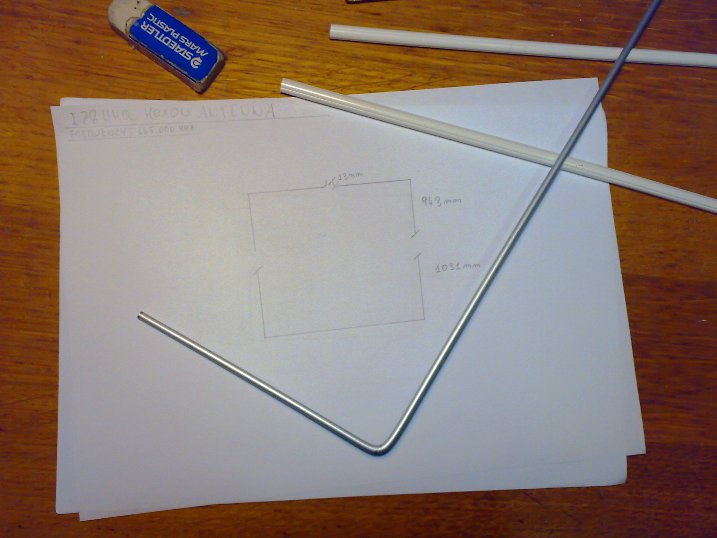
This is the Reflector ( 2 * D + A) part is 1031,0mm
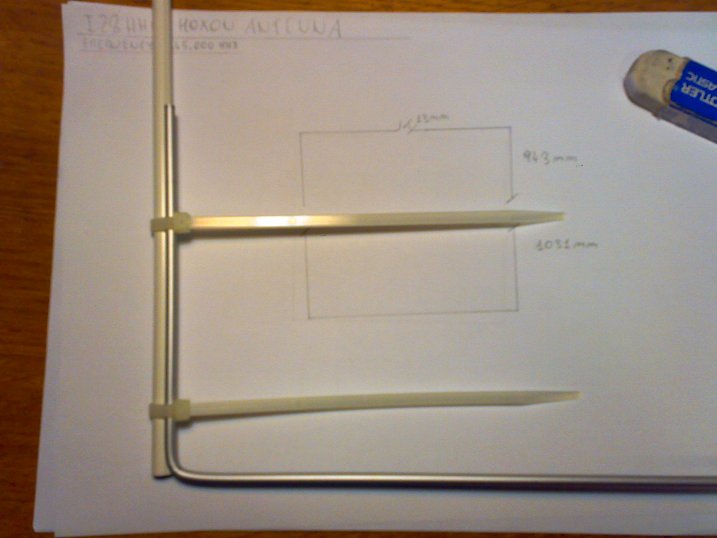
First, I fixed the aluminum parts with plastic cable ties
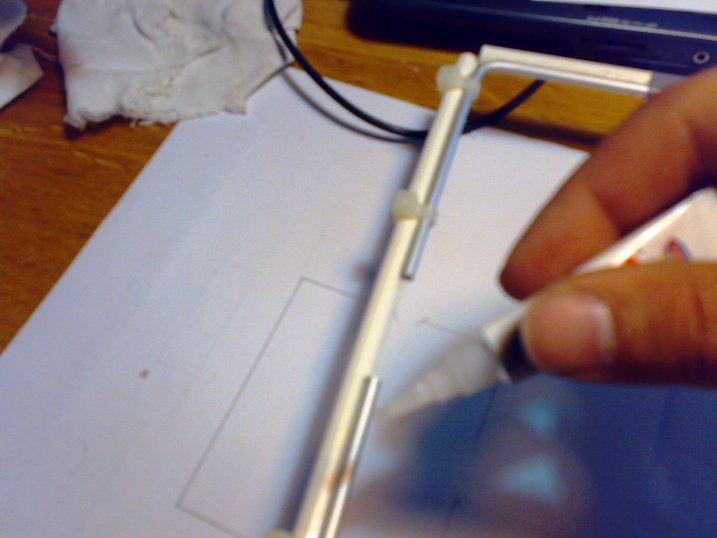
Then, I used the rapid glue to immobilize the aluminum parts on the skeleton
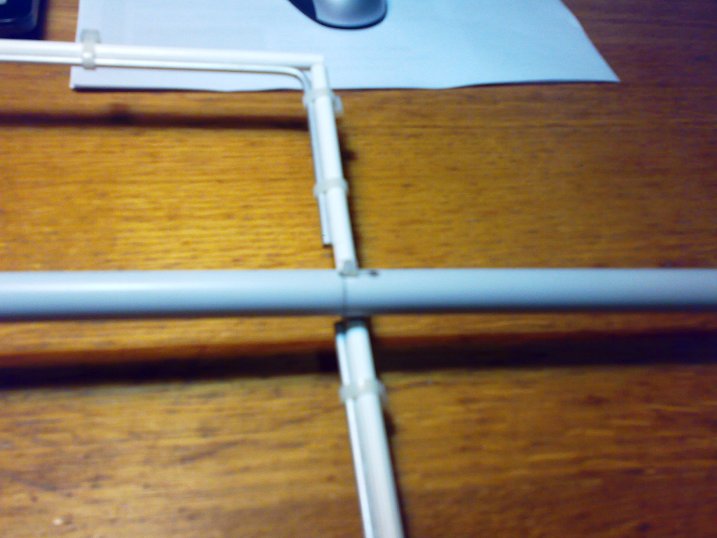
I attach the 100mm pipe to give great stability and the possibility of mounting orientation

Finally, I connect the cable to the antenna terminals and add terminal caps
Note that terminal points must be scratched with sandpaper

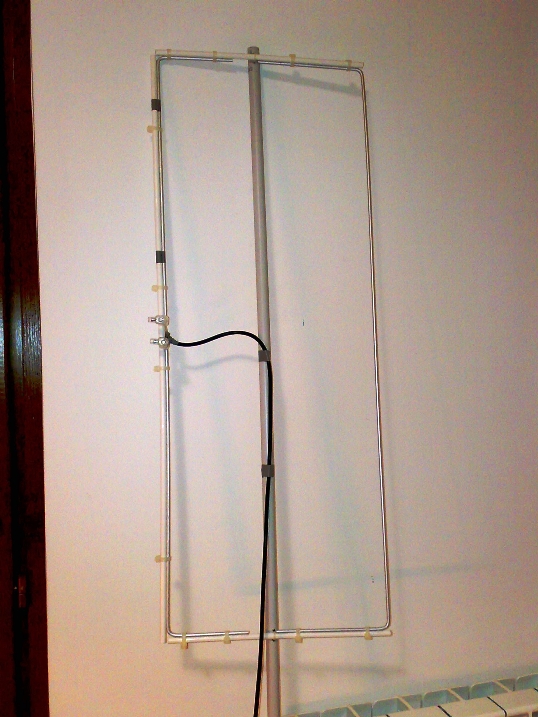
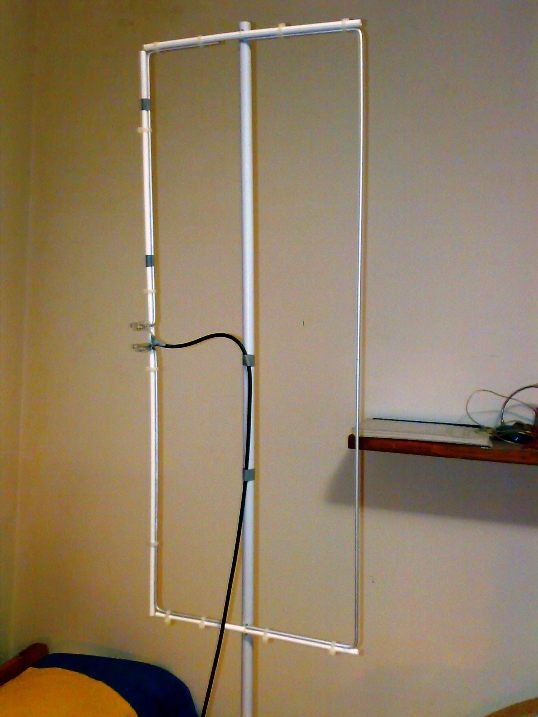

Enjoy!
Ciro
has a website at http://www.qsl.net/iz8hhq
|
|
visits: [an error occurred while processing this directive]
|
